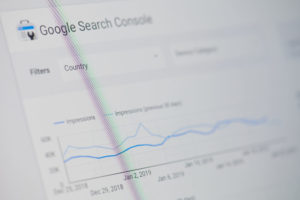In a surprising move, Instagram has made the decision to open its gates to search engines. As of July 2025, creators on the platform, as well as public posts made by professional/business accounts, are now indexable by Google.
This means with this change, your law firm’s Insta pics can now find their way to the top of Google search results, just like any other blog post or webpage.
This is huge for big law firms, startup legal marketers, and anyone else in the business. Instead of your Instagram profile just being a means of sharing with the community you’ve already built around, it can now play an active role in expanding your reach.
Here’s everything you need to know to do just that.
What Is Instagram Indexing and Why Does It Matter?

In the world of SEO, indexing is the process of building a structure (or index) of data that allows search engines to find it. Previously, Instagram blocked search engines from accessing content on the platform, but as of July 2025, they now allow Google to crawl public-facing information on the site.
This means content from public professional accounts is finally eligible for SERPs. Effectively, anyone who makes an engaging post on their account is also inadvertently creating a discovery tool with a few differences compared to traditional legal marketing:
- Your profile is now a search engine asset instead of just a social platform.
- Public posts are a new vector for organic traffic without dependence on advertising.
- Content has a much higher potential for becoming evergreen.
- Legal search queries have the potential to lead directly to your Instagram page.
Google’s New Instagram Indexing Policy (July 2025) Explained
Instagram’s policy shift comes in the wake of the success of other SEO-visible social media platforms such as TikTok and LinkedIn, which have proven to be a godsend for improving creator and business visibility online.
For those worried about privacy, indexing is optional, and creators on the platform may opt out of the system if they wish. That said, indexing is set to on by default for business accounts.
Which Instagram Profiles Are Eligible?
Not all content on the platform can be indexed. Instagram will only allow crawlers to access content if it is:
- On a public account.
- On an account set to professional (either Business or Creator).
- On an account managed by a person over the age of 18.
- From January 1, 2020, and onward.
This means private accounts and content that minors post will remain hidden.
If you or your law firm’s Instagram account meets the above conditions, then you already are participating in the new ecosystem, regardless of whether or not you are aware of it.
What Content Can Google Index and Display?
As long as it meets the aforementioned criteria, generally, all content on your Instagram profile can be indexed and displayed by Google. This includes:
- Your Instagram bio
- Image captions
- Any alt texts on images
- Post and Reel descriptions
- Geotags and hashtags
- Post URLs (e.g., instagram.com/yourfirm/post123)
Informative captions, visual content, and SEO optimization practices now apply when creating and organizing your content, as all of the above can now appear in related legal searches.
Say, for instance, if a user Googles “car accident lawyer Boston,” and you have any social media presence in the area, Google search results might now display an IG post from your firm where you are posing with a client after a successful seven-figure claim. If you optimized that post, it will also display with a link to your profile.
How Indexing Affects Branded and Non-Branded Searches
As expected, branded searches, such as “Your Law Firm Instagram,” will now return your profile together with any posts related to your brand. Any posts other people make related to your brand can also potentially serve as a review and boost publicity.
Of course, the double-edged sword to this is that if you have a poor reputation on social media, then you’ll probably have to take steps for positive chatter to outweigh the bad.
More exciting than how this change to indexing affects branded searches, however, is how it affects non-branded ones (e.g., Financial lawyer New York). Your firm now has a chance of showing up in these searches, together with:
- Any posts that contain relevant terms.
- Any of your images that include legal phrasing in the alt text
- Your bio, assuming it is optimized with keywords and location data.
The caveat being, your competitors can take advantage of the same system too, so you will want to actively maintain a competitive profile. Let’s take a look at how to do that.
Optimization Tactics for Legal Marketers
Because Instagram profiles can now serve as essentially SEO soapboxes, legal marketers can and should be expected to treat content on the site the same way they would a law firm’s actual website. As such, every post, every piece of content, should ideally be optimized for compliance and clarity.
Structuring Instagram Bios for SEO and Compliance
Following the change, you’ll want to treat your Instagram bio as a micro-landing page. This means:
- Use keywords.
- Don’t waste links.
- Stay compliant.
For your bio to benefit your brand, be sure to include your location and core services, together with any opportunity to drive traffic to a contact form or high-intent page. Remember to keep information consistent across Instagram and your website.
The final tip is especially important to consider. Remember that legal marketing is subject to strict regulation, so avoid making guarantees or unverifiable claims, as these are often red flags that, if they don’t land you in trouble with search engine rankings, will almost definitely land you in trouble with your state bar.
Writing Keyword-Rich Captions That Rank
Since captions are now indexable, they can be treated the same way as headers in terms of how they describe the content. This means a deliberate move away from generic captions talking about how you feel (“another day in court, another satisfied client :D”), and toward more targeted and informative descriptions (“Another successful car accident claim in Michigan with our team at Your Law Firm”).
- Are you looking to answer an FAQ? If so, add a caption that answers an FAQ (“You only have two years to file a claim. Let’s work together and get things done.”)
- Try to write your captions as if you’re addressing a search query. Do note that search engines can flag you for overstuffing, so while it’s a great idea to implement keywords into captions when you can, always phrase them naturally.
Implementing SEO-Optimized Alt Text, Hashtags, and Geotags
Alt texts, hashtags, and geotags aren’t the most readily visible factors that affect SEO, but after the indexing changes, they now affect your discoverability on search engine results the same way they do on the platform itself.
Alt texts should ideally be descriptive of what’s in the post. A good example of this might be: “One of our truck accident lawyers meeting a client in our Alabama office.”
Hashtags are a little more complicated. You want tags trendy enough to catch on, and ideally, something people already use, but if they’re too trendy, they will also have too much competition to stand out.
Try to choose highly relevant, niche hashtags that accurately reflect your legal services and target audience.
Geotags are straightforward: always tag your office location or the area you serve if relevant to the post. The rule of thumb is that you use hashtags to broaden your reach, while you use geotags to get a deeper hold in the places you already have a presence in.
Tracking SEO Performance From Instagram Posts
If Instagram now serves as an SEO tool, the next question then becomes: how do you track its performance? There are multiple ways to do so, and what we list here does not necessarily cover every approach, but they are some of the most reliable methods.
- Use UTM Parameters on Links: With only one main bio link allowed, you really have to make sure it counts. Add a UTM parameter to your link to allow Google Analytics to track clicks, and you should be able to see exactly how many visitors came from Instagram.
- Check Instagram’s In-App Insights: Don’t downplay Instagram’s own engagement metrics. Regularly check your reach, profile visits, saves, etc.
- Monitor Keyword Rankings: Old but gold external tools like Ahrefs and Semrush retain their value now that they can track content on Instagram and whether keywords in your content are starting to rank. Watch for non-branded keywords and use them appropriately.
- Set Up Google Search Console Filters: Since your posts now show up in search, they will be visible in the Google Search Console. Filter URLs containing “instagram.com,” and you should be able to get an idea of impressions, clicks, average position, and more.
Take Control of Your Instagram SEO Strategy With JW Digital Marketing
With the new changes to Instagram’s indexing policy, it’s time to stop treating your profile as just a social platform and turn it into an entry point for your business. Instagram’s changes are meant to make it competitive with other platforms, and that means allowing its users access to SEO assets that your firm can’t afford to ignore.
Start small; start with a post. After that, think long-term and turn your platform into the SEO tool it just became.
Finally, don’t hesitate to turn to help if you feel out of your depth. If you’re looking to maximize your reach, we offer professional SEO services to help you generate compliant and optimized content that ranks.
Partner with JW Digital Marketing today to get started.






 (470) 264-4875
(470) 264-4875